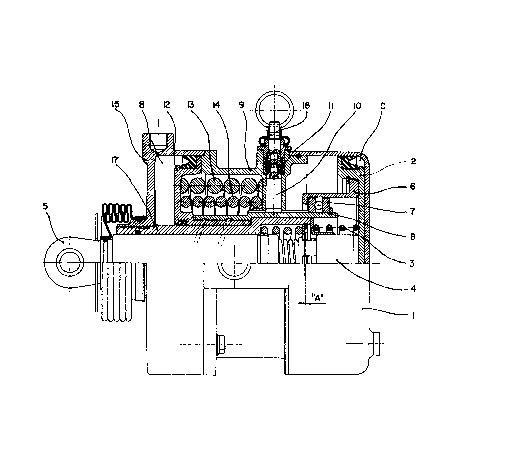Some of the information on this Web page has been provided by external sources. The Government of Canada is not responsible for the accuracy, reliability or currency of the information supplied by external sources. Users wishing to rely upon this information should consult directly with the source of the information. Content provided by external sources is not subject to official languages, privacy and accessibility requirements.
Any discrepancies in the text and image of the Claims and Abstract are due to differing posting times. Text of the Claims and Abstract are posted:
| (12) Patent: | (11) CA 1291049 |
|---|---|
| (21) Application Number: | 1291049 |
| (54) English Title: | ACTUATING DEVICE FOR A VEHICLE BRAKE RIGGING |
| (54) French Title: | DISPOSITIF DE COMMANDE POUR MECANISME DE FREIN |
| Status: | Expired and beyond the Period of Reversal |
| (51) International Patent Classification (IPC): |
|
|---|---|
| (72) Inventors : |
|
| (73) Owners : |
|
| (71) Applicants : |
|
| (74) Agent: | SMART & BIGGAR LP |
| (74) Associate agent: | |
| (45) Issued: | 1991-10-22 |
| (22) Filed Date: | 1986-03-04 |
| Availability of licence: | N/A |
| Dedicated to the Public: | N/A |
| (25) Language of filing: | English |
| Patent Cooperation Treaty (PCT): | No |
|---|
| (30) Application Priority Data: | ||||||
|---|---|---|---|---|---|---|
|
ABSTRACT
An actuating device for a vehicle brake rigging, comprising a service
brake and a spring parking brake.
The device comprises, apart from a service brake cylinder (1) and piston
(2) and a parking brake cylinder (15, 17) and piston (12), a ratchet wheel (8)
disposed between the two pistons, non-permanent connection means (6, 7)
provided between the ratchet wheel and the service brake piston; and further
connection means (10, 12) provided between the ratchet wheel and the
parking brake piston; the ratchet wheel being controllable in translation and
in rotation-translation, depending on whether a chamber (B) of the parking
brake cylinder is either emptied or fed.
Note: Claims are shown in the official language in which they were submitted.
Note: Descriptions are shown in the official language in which they were submitted.

2024-08-01:As part of the Next Generation Patents (NGP) transition, the Canadian Patents Database (CPD) now contains a more detailed Event History, which replicates the Event Log of our new back-office solution.
Please note that "Inactive:" events refers to events no longer in use in our new back-office solution.
For a clearer understanding of the status of the application/patent presented on this page, the site Disclaimer , as well as the definitions for Patent , Event History , Maintenance Fee and Payment History should be consulted.
| Description | Date |
|---|---|
| Inactive: IPC deactivated | 2012-01-07 |
| Inactive: IPC expired | 2012-01-01 |
| Inactive: IPC from PCS | 2012-01-01 |
| Inactive: First IPC from PCS | 2012-01-01 |
| Inactive: IPC from MCD | 2006-03-11 |
| Time Limit for Reversal Expired | 2003-10-22 |
| Letter Sent | 2002-10-22 |
| Grant by Issuance | 1991-10-22 |
There is no abandonment history.
| Fee Type | Anniversary Year | Due Date | Paid Date |
|---|---|---|---|
| MF (category 1, 6th anniv.) - standard | 1997-10-22 | 1997-10-14 | |
| Registration of a document | 1998-04-28 | ||
| MF (category 1, 7th anniv.) - standard | 1998-10-22 | 1998-09-29 | |
| MF (category 1, 8th anniv.) - standard | 1999-10-22 | 1999-09-28 | |
| MF (category 1, 9th anniv.) - standard | 2000-10-23 | 2000-09-29 | |
| MF (category 1, 10th anniv.) - standard | 2001-10-22 | 2001-10-09 |
Note: Records showing the ownership history in alphabetical order.
| Current Owners on Record |
|---|
| SAB WABCO SA |
| Past Owners on Record |
|---|
| MICHEL ROGER |